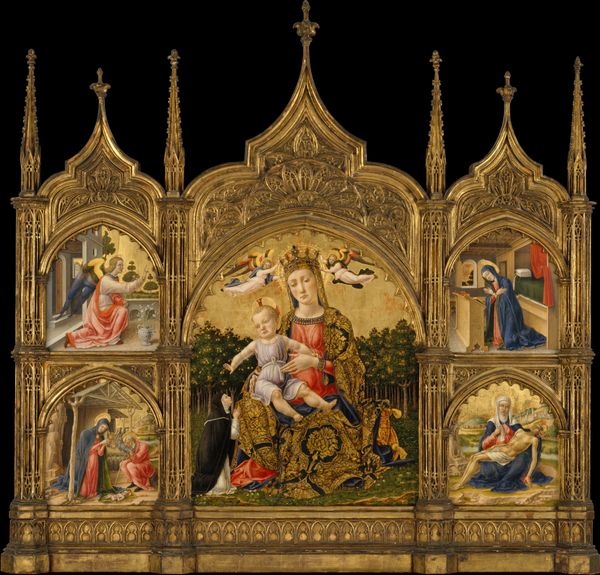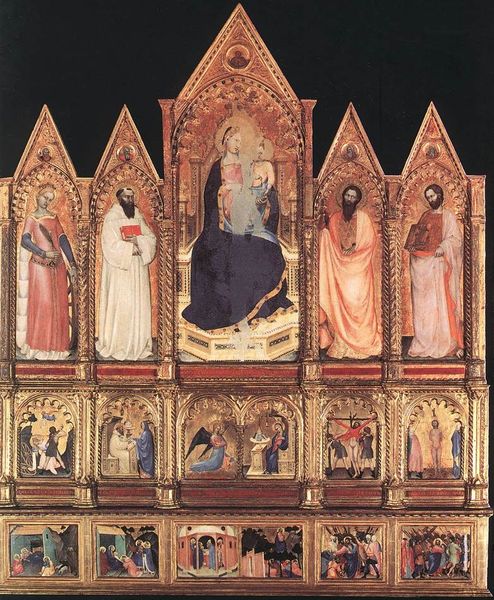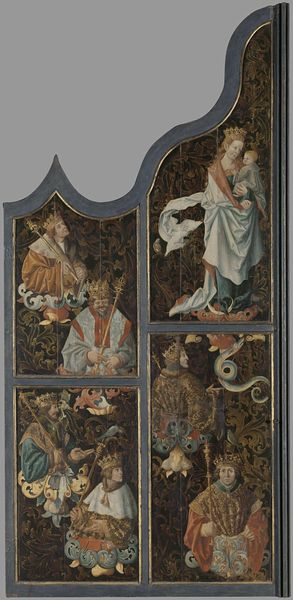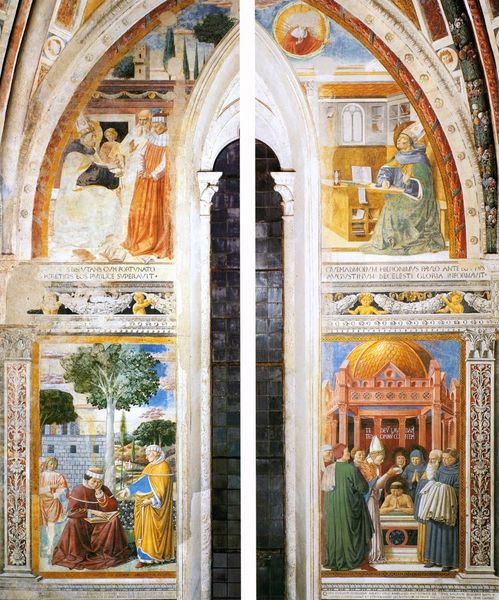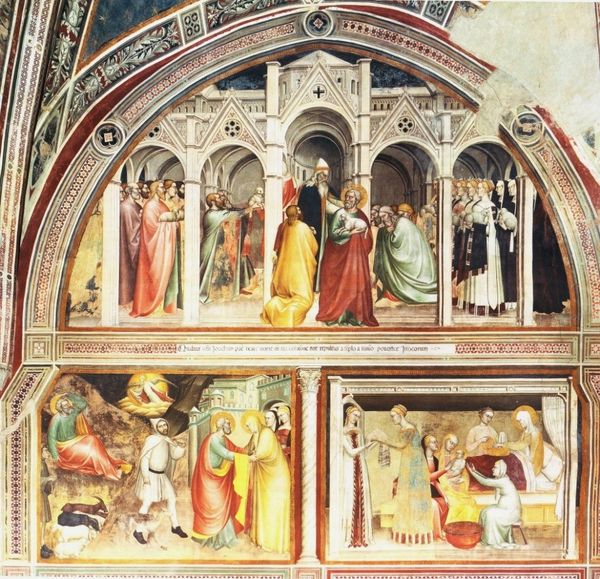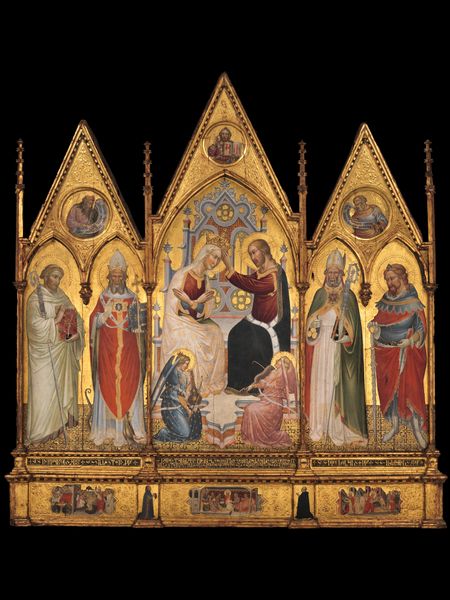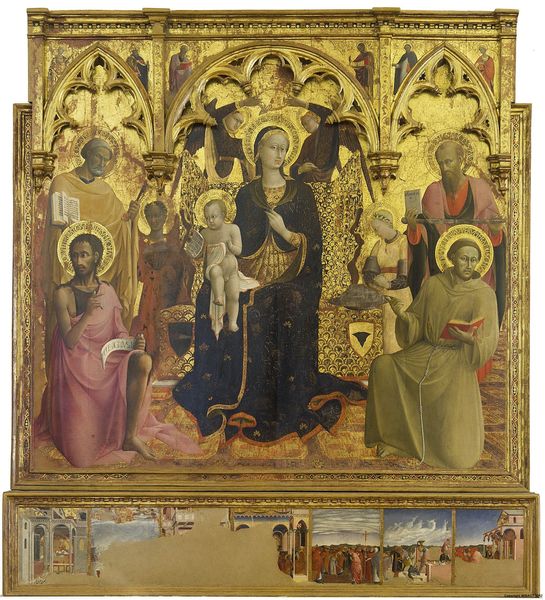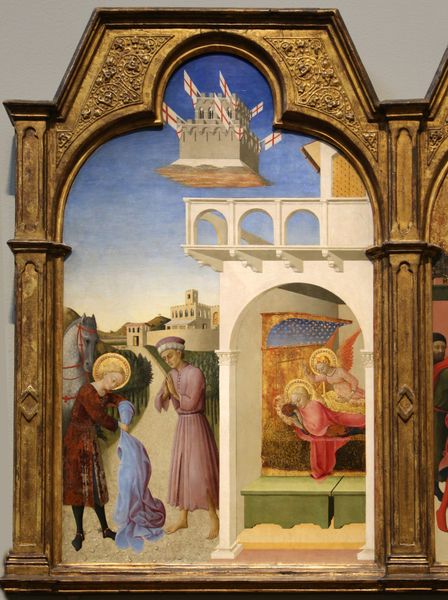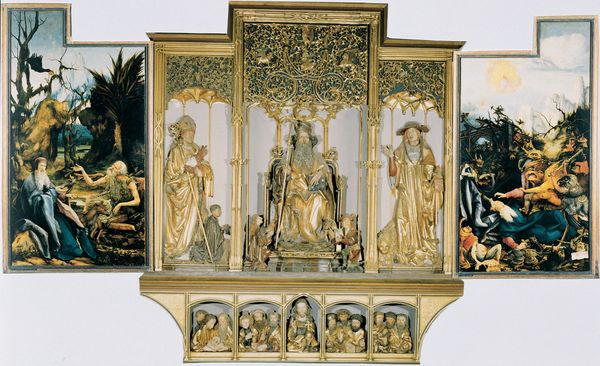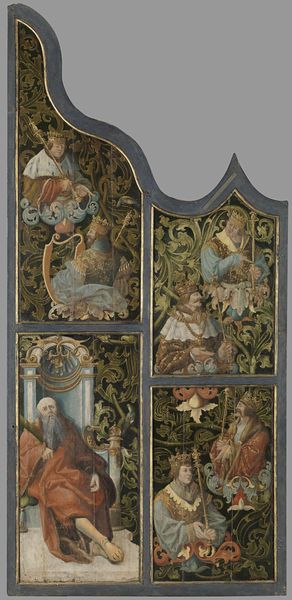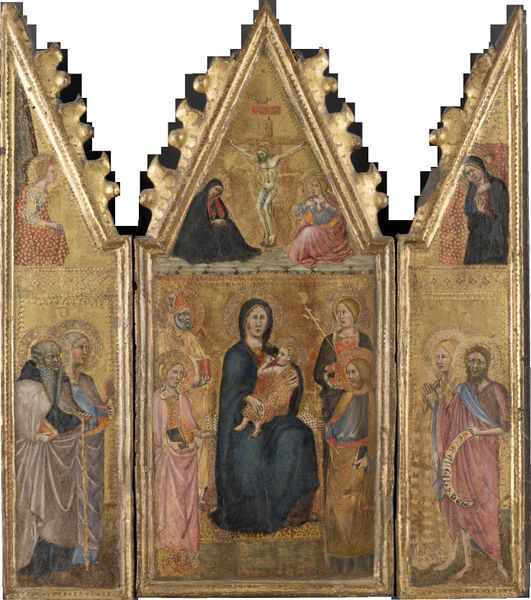
Crucifixion, Virgin and Child, Deacon and Scenes from the Legends of Saints Matthew and John the Evangelist c. 1345 - 1350
0:00
0:00
panel, painting, oil-paint
#
portrait
#
medieval
#
panel
#
narrative-art
#
painting
#
oil-paint
#
sculpture
#
gothic
#
sienese-school
#
figuration
#
oil painting
#
jesus-christ
#
child
#
abstraction
#
crucifixion
#
italian-renaissance
Copyright: Städelsches Kunstinstitut
Editor: Here we have Pietro Lorenzetti's "Crucifixion, Virgin and Child, Deacon and Scenes from the Legends of Saints Matthew and John the Evangelist" from around 1345 to 1350, painted with oil on a wooden panel. The sheer number of panels forming this altarpiece is a bit overwhelming. How do you approach understanding its overall structure and meaning? Curator: By looking carefully at the intrinsic structure. Notice the distinct registers and how each panel acts as a discrete unit, yet contributes to a larger narrative. Consider the hierarchical arrangement, with the Crucifixion occupying the central and most prominent position. Editor: Right, and there are smaller narrative scenes around the edges. Do you think the use of gold leaf affects how we interpret those narratives? Curator: Undeniably. Gold, in its inherent material quality, emphasizes the sacred and otherworldly. It flattens the picture plane, directing attention not towards realistic space, but rather towards symbolic meaning. Observe how the gold backgrounds contrast with the more earthly tones in the figures' robes, creating a visual hierarchy. Editor: So it’s drawing us to focus on what’s most spiritually important, creating almost a sense of otherworldliness? It is also striking how stylized the figures are. Curator: Indeed. Lorenzetti has employed elongated proportions and stylized gestures. Reflect on how these formal choices impact the reading of emotion. For example, the Virgin’s posture, note its graceful curve and inward gaze in contrast to angular and upward gestures on the cross panel, evokes sorrow and piety through purely visual means, before concerning ourselves with narrative assumptions. Editor: That makes me appreciate how deliberately Lorenzetti used those forms, how he contrasts horizontal and vertical in the various panels. I see it now as a conversation. Curator: Precisely. Understanding the formal relationships unlocks the narrative potential. It highlights that meaning resides not only in iconography but within the intrinsic qualities of visual form.
Comments
stadelmuseum about 2 years ago
⋮
Attributed to Pietro Lorenzetti and his workshop, this polyptych is like a miniature version of a large altarpiece. In the centre are depictions of the Crucifixion and the enthroned Virgin and Child with a kneeling deacon. The left-hand side recounts the calling and martyrdom of St Matthew, while the sections on the right show St John on the island of Patmos and his ascension to heaven. Parts of the latter scene reveal the influence of Giotto’s fresco in Santa Croce in Florence. This wittily devised pictorial narrative is crowned by a row of saints and the Annunciation.
Join the conversation
Join millions of artists and users on Artera today and experience the ultimate creative platform.


